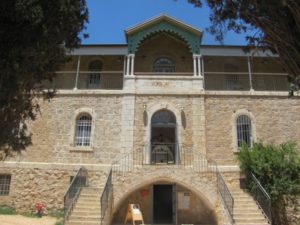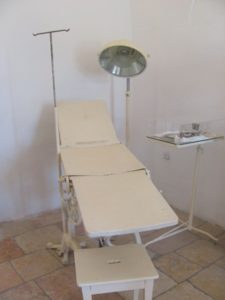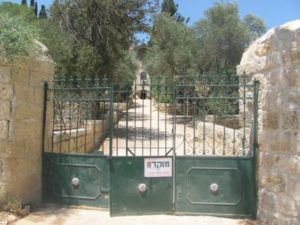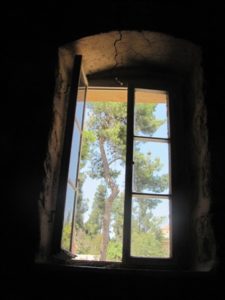Parashat Metzora continues the previous parasha – Tazria. Both Parashot deal with one who is infected with leprosy, the ways he can be diagnosed the measures he should take and the purifying rituals he needs to practice. No wonder then that during leap years it is custom to read both parashot on the same day. Metzora teaches us about three types of leprosy: leprosy of the body, leprosy of the cloth and leprosy of the house. Every affliction is described in details and the priest that finds the affliction get very specific orders as for the way he should act. Yes, surprisingly the treatment for leprosy is meant to be administered by a priest rather than a doctor. When a priest finds for example the leprosy of houses he is ordered to seal the house for a week and than recheck it. If the leprosy is not gone yet the priest is ordered to perform the rites and take the contaminated stones out of the camp. The priest plays an important role in the process of cleansing of body leprosy.
The reason the priest gets to treat leprosy in that leprosy is perceived as a punishment from god. Interestingly enough, Most of the scripts don’t try to understand which sin serves as a reason to get leprosy. We do know of a few statements saying that leprosy is the result of immoral behavior as in the case of Miriam, sister of Moses who got leprosy for speaking ill on Moses’s wife (Numbers, 12:1) or the saying of the sages that a leprous is “he who speaks ill of another (Bavli, Arachin, 15:2) but most of the time the scripts are more concerned about defining leprosy, identifying it and treating it. According to Halacha – Diagnosis and purification – this is what it was all about when it comes to leprosy.
And then came Rabbi Israel Meir Kagan of Radin who is also known as the Chofetz Chaim. He is the one who emphasized the reason why people are getting leprosy. He said evil gossip is the cause and cited Psalms 34 13-14: ” Who is the man who desires life And loves length of days that he may see good? Keep your tongue from evil And your lips from speaking deceit. Depart from evil and do good; Seek peace and pursue it”. The Chofetz Chaim shifted Halacha discussions from punishment to sin itself and since then this was the common approach.
The medical issue of Leprosy is as confusing as the Halacha discussion. We are not really sure what leprosy is. If you check you dictionary you will find a definition that sounds like: “a serious disease that causes painful rough areas on the skin and that badly damages nerves and flesh”. This isn’t a medical definition. Reviewing the skin inflictions mentioned in Tazria and Metzora Parasot shows us a variety of symptoms that can describe various skin diseases. The name leprosy is used today to describe a disease known as ” Hansen’s disease”. This is a bacteria induced disease caused by mycobacterium leprae – a bacteria described for the first time by Gerhard Armauer Hansen in 1873. The diseases affects mostly skin, nerves and periferial organs. It is treatable by antibiotics today but was considered a terrifying incurable disease of the ancient world. In earlier days and also in quite a few places in our days world people who got infected were removed from society to the outer areas of cities and no one dared to contact them.
Leprosy could be found in Jerusalem throughout history. During the crusades a new military order, all its members leprous, was founded. It was known as Order of St. Lazarus. St. Lazarus order had its base near what is known today as the new gate of the old city of Jerusalem. In the middle of the nineteenth century there were many leprous in Jerusalem. A German noble named Von Keffenbrink who toured Jerusalem in 1866 was deeply affected by the harsh life of leprous in city. He decided to donate a nice sum of money to the Anglo-German Bishop and the money was used to build a leprous house near the mamilla pool (20 Agron St. of our days). A few years later it was clear the house is too small and another building was built. The old house was bought by the Order of St. Lazarus and its members still live there today. You can enter this place today as long as you talk to them in advance. The visit is highly recommended.
The work on the new leprous house (in the heart of Talbiya neighborhood just near the Jerusalem theatre) started in 1887. The known German architect Conrad Schick who was one of the most important builders of Jerusalem in the second half of the 19th century took on the job. Schick planned an impressive three story building with a nice garden and high wall. He wanted the house to become a self-sufficient farm. Schick did a lot of thinking about the shape and plan of the front wooden balcony under which a sign with the name of the institution (Jesus Hilfe – Jesus’s help) was hanged. During the days of the british mandate the institution lead by Dr. Taufik Kana’an continued to treat patients from all communities and nationalities. In 1948 it became a public hospital. In 1982 a new antibiotic treatment for leprosy was found and the number of admitted patients dropped drastically. The few patients left were sent to other hospitals all over Israel and Hansen’s house was used as day clinics and eventually was shut down. This is the reason why in the middle of a modern neighborhood with many culture institutions a huge compound surrounded by stone walls was left. The place was an attraction to many curious by passers for many years. In 2009, after the building became the property of the Jerusalem municipality it was decided to turn it into a house for art and culture. In 2013 the center for Media and technology design was established in Hansen’s house. This is a place for new interesting initiatives and for everyone who is interested in Jerusalem’s history and it’s unfortunate leprous.
Each time I enter this former leprous hospital I recall a story written by S. Y. Agnon named “Forever” (Ad Olam). This short story tells us about a book of the history of the imaginary city of Gomelditha that was accidentally discovered inside a leprous hospital. Adiel Amze, our protagonist and the researcher that discovers the book enters the hospital and stays there forever studying the old book and writing the new one, “However his book never got to be seen amongst the living as no object, letter, scroll or a book ever leaves the leprous house”. The thought of a place in the world which is closed and won’t even let new ideas come out is harsh and therefor I find in the transformation of Hansen’s house from a mysterious enclosure to an open house of art and culture an important and positive change.



